2023年5月29日,星期一,东京之行第三天
Monday, May 29, 2023, our third day in Tokyo
早上醒来,外面在下雨,正好借这个时间把这两天的行动记录下来。早饭又是昨晚从7-11买的,当然某人又买了鸡蛋沙拉三文治,我买了一个饭团和一个面包。
When I woke up this morning, it was raining, so I just took the time to record the actions of the past two days. We bought breakfast from 7-11 last night again, and as before someone bought an egg salad sandwich, and I bought a rice ball with bread.
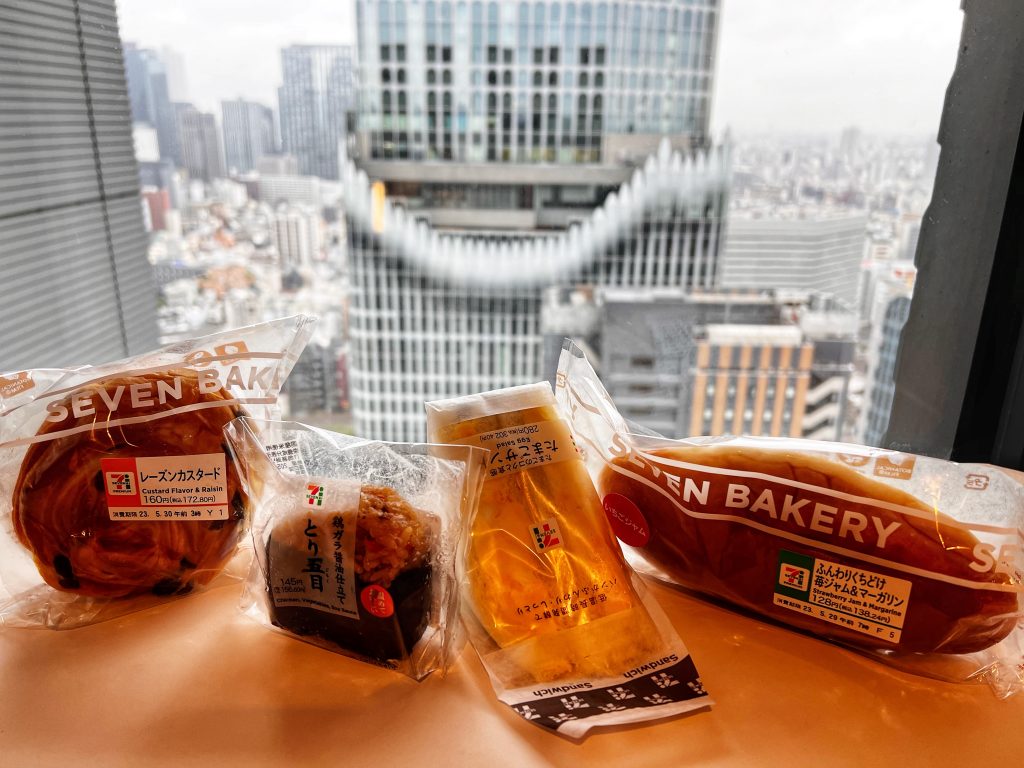
今天第一站要去浅草寺,东京最古老、最著名的寺庙之一,也是游客们必去的景点之一,浅草寺的历史可以追溯到公元628年,已有超过1400年的历史。从新宿到那里,要坐大概40多分钟,转乘一班地铁才能到,还算方便,早上10点多,地铁里不算拥挤。
Our first stop today is the Sensoji Temple, one of the oldest and most famous temples in Tokyo, and one of the must-see attractions for tourists. The history of Sensoji Temple can be traced back to 628 AD and has more than 1,400 years of history. It took about 40 minutes to get there from Shinjuku via the subway. It was quite convenient, and the subway was not too crowded after 10am.
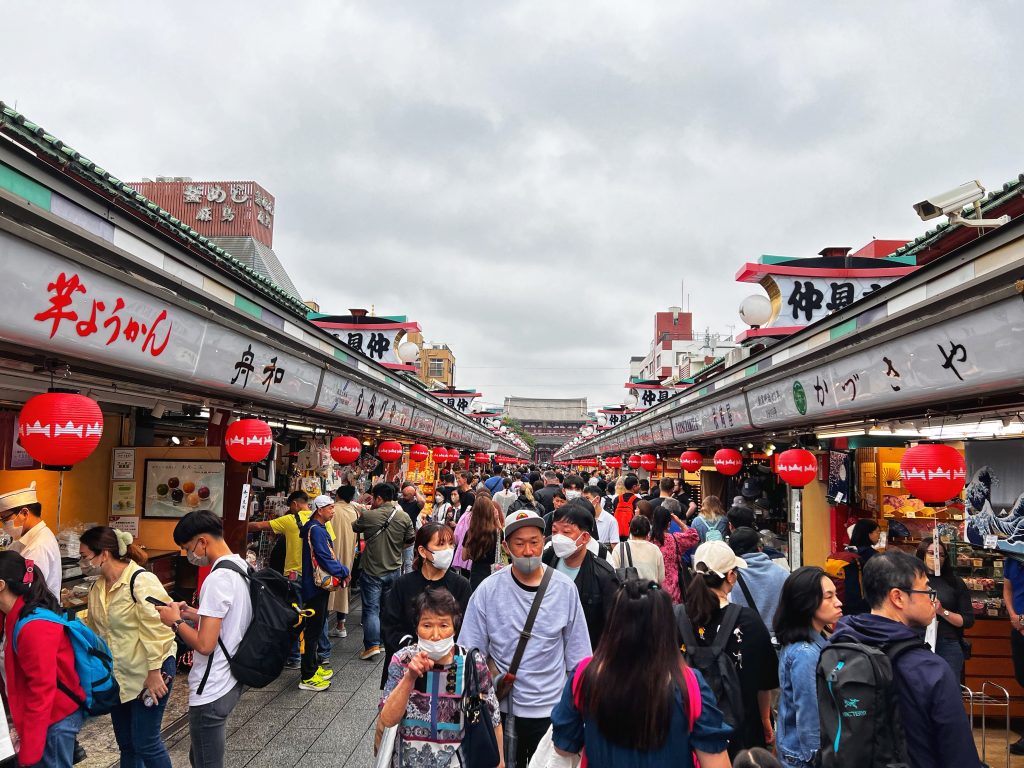
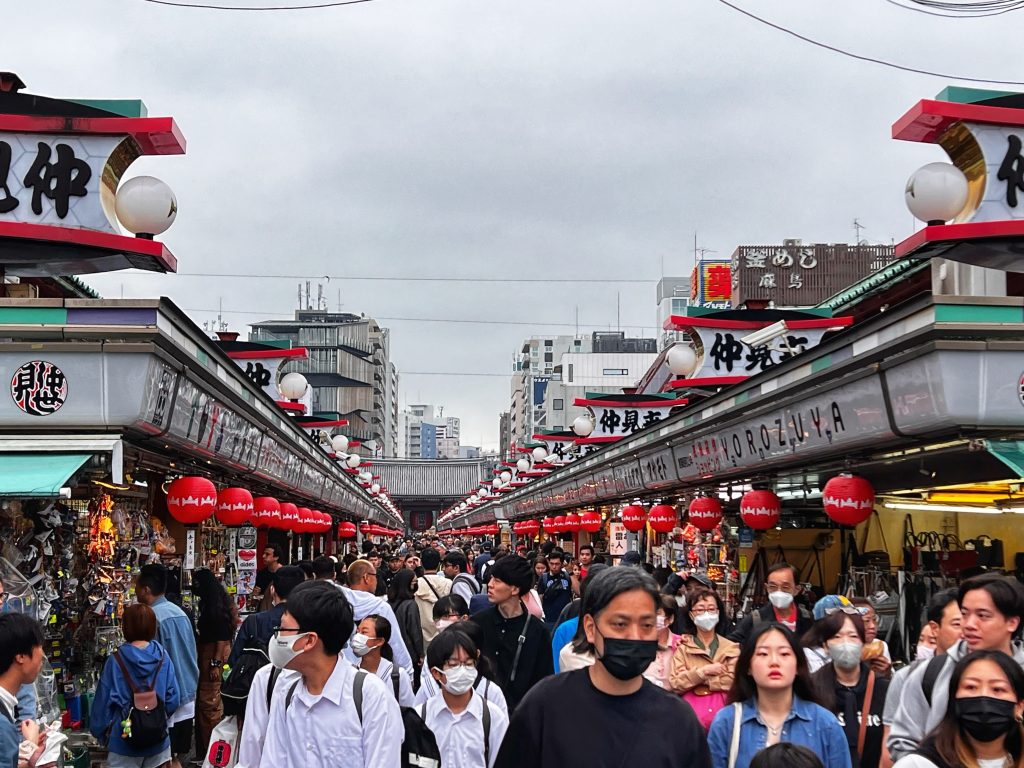
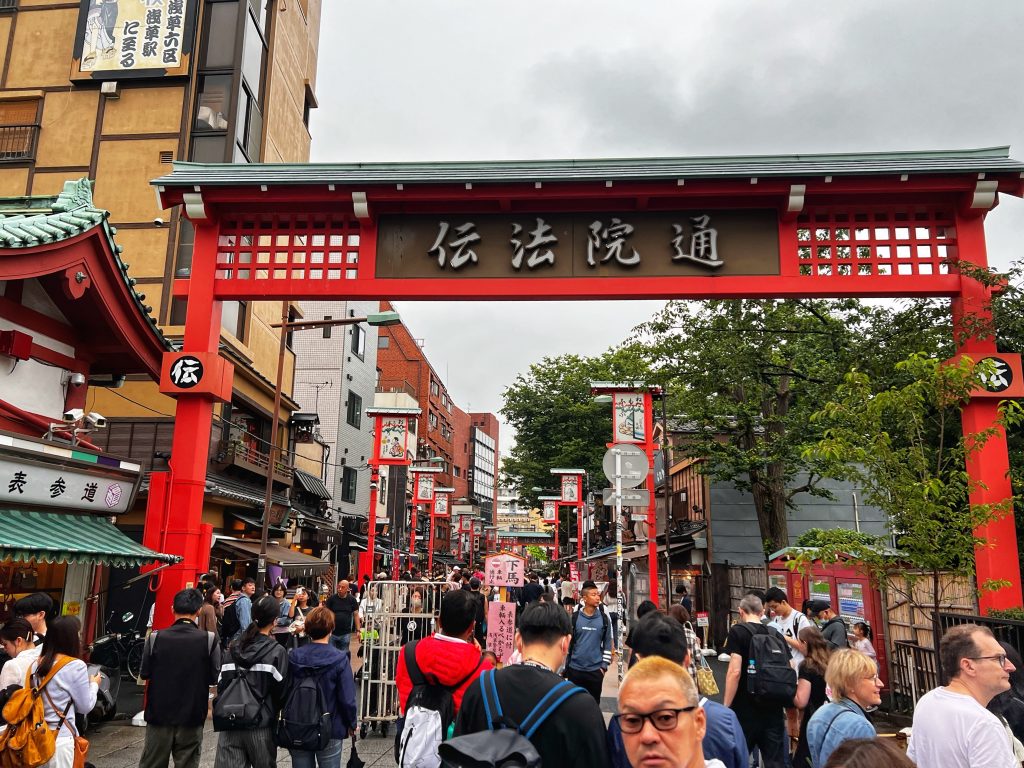
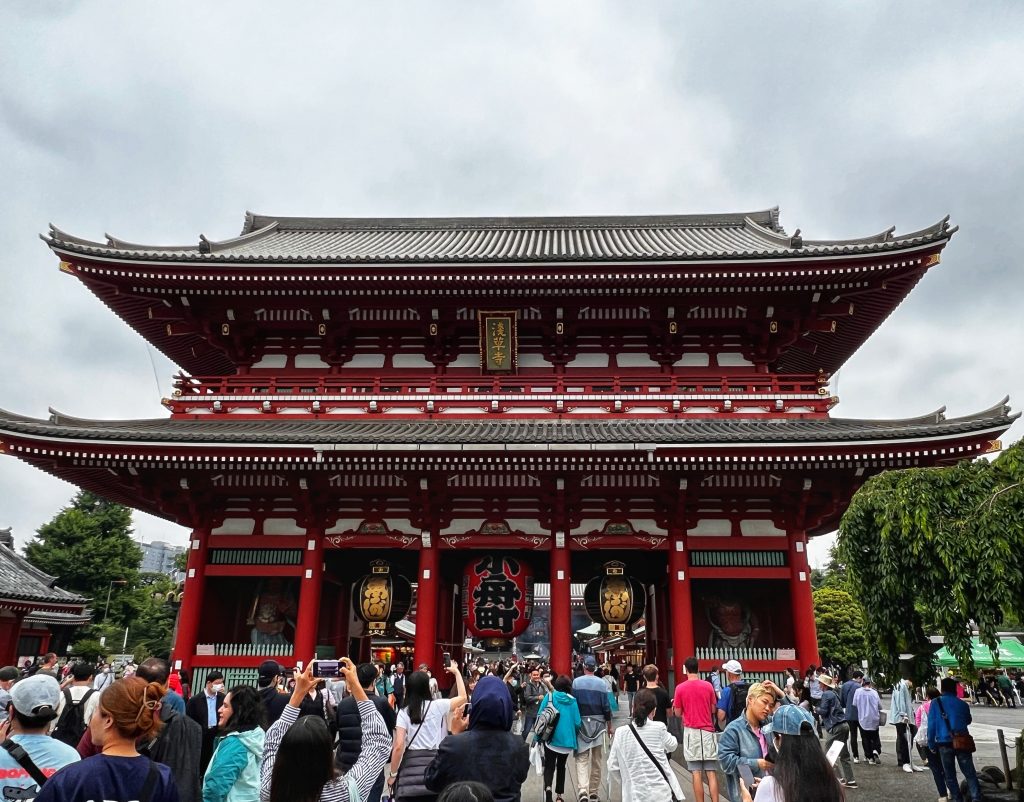
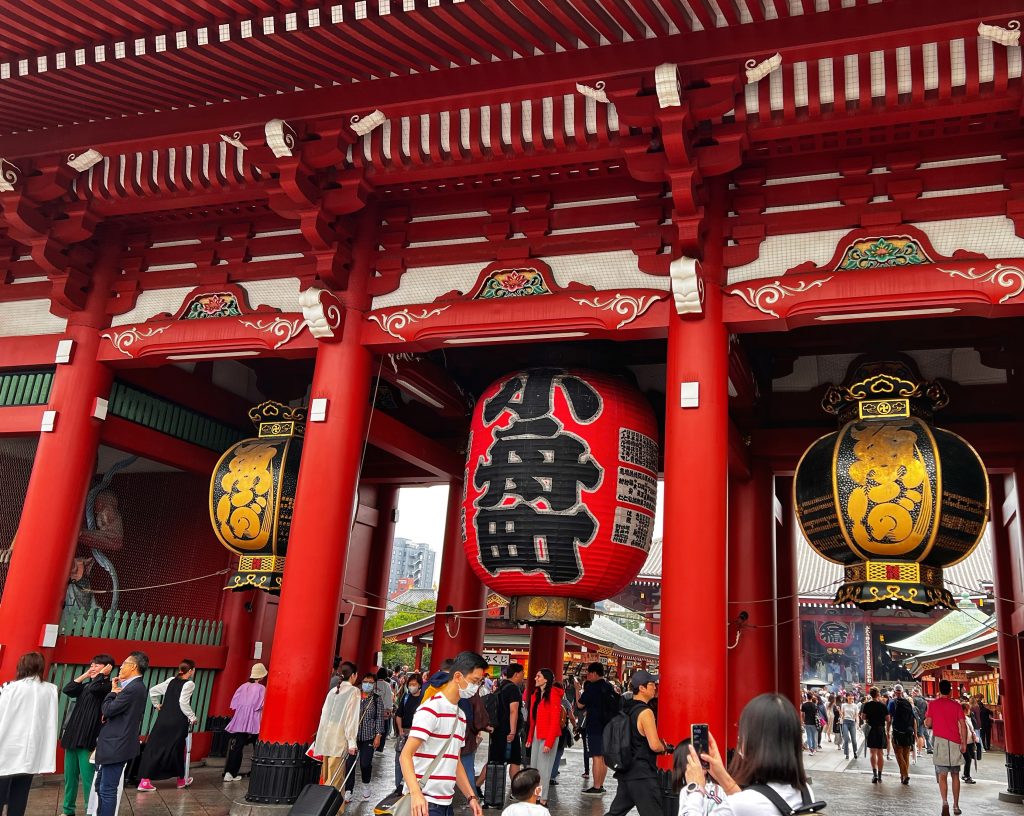
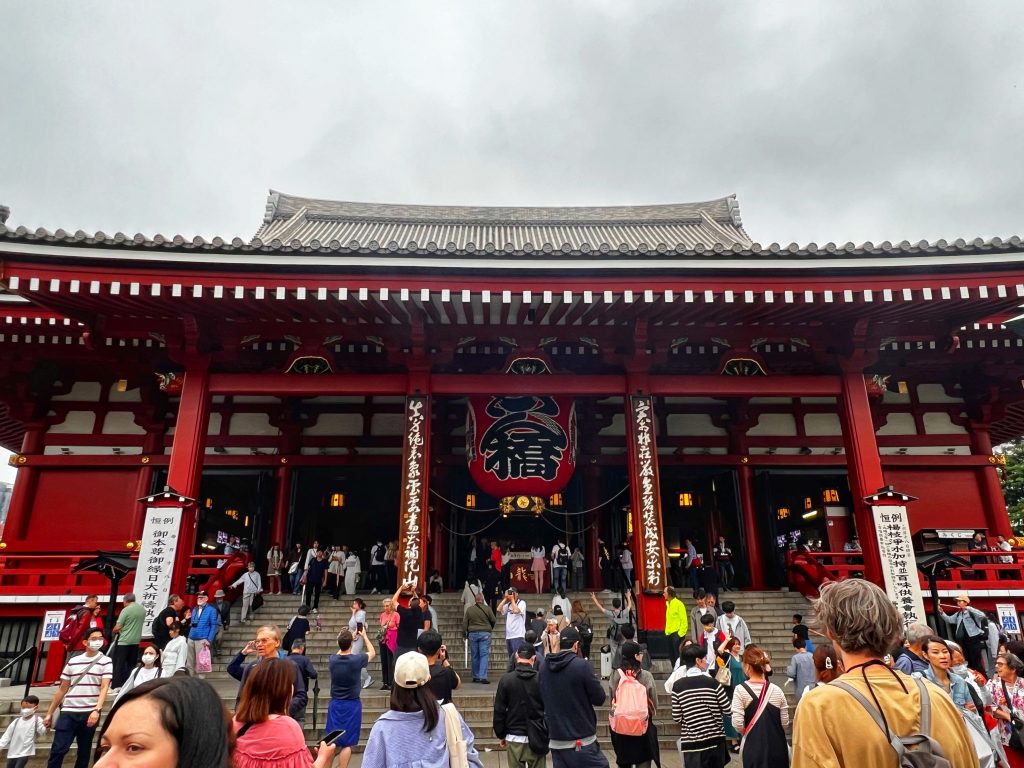
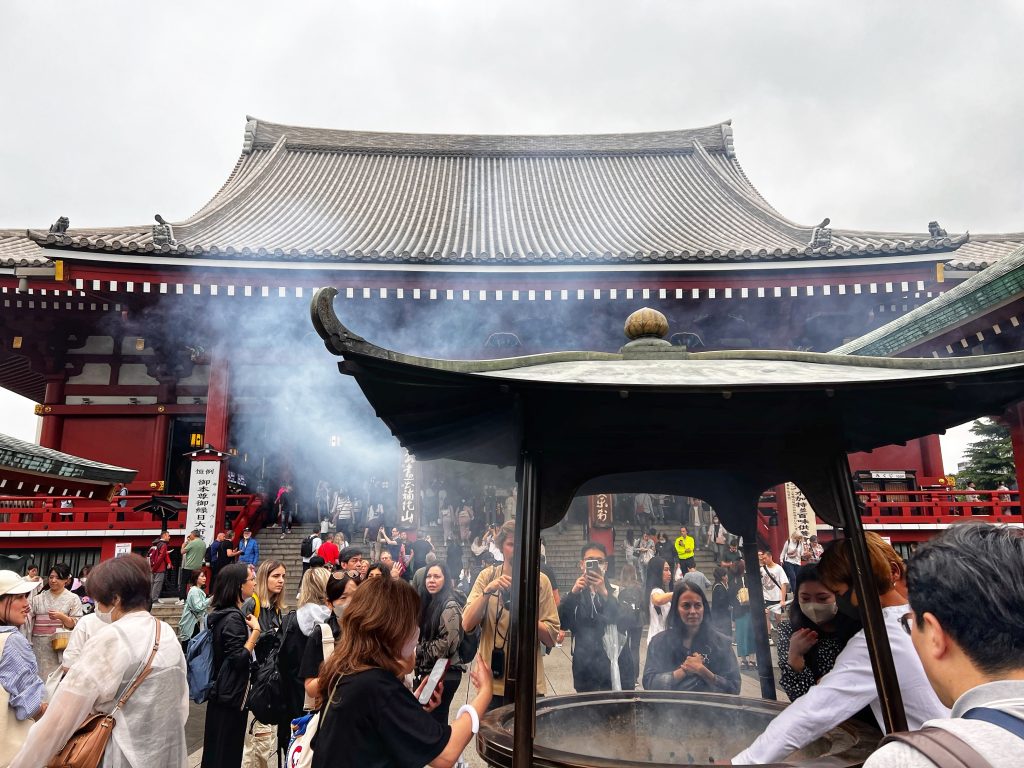
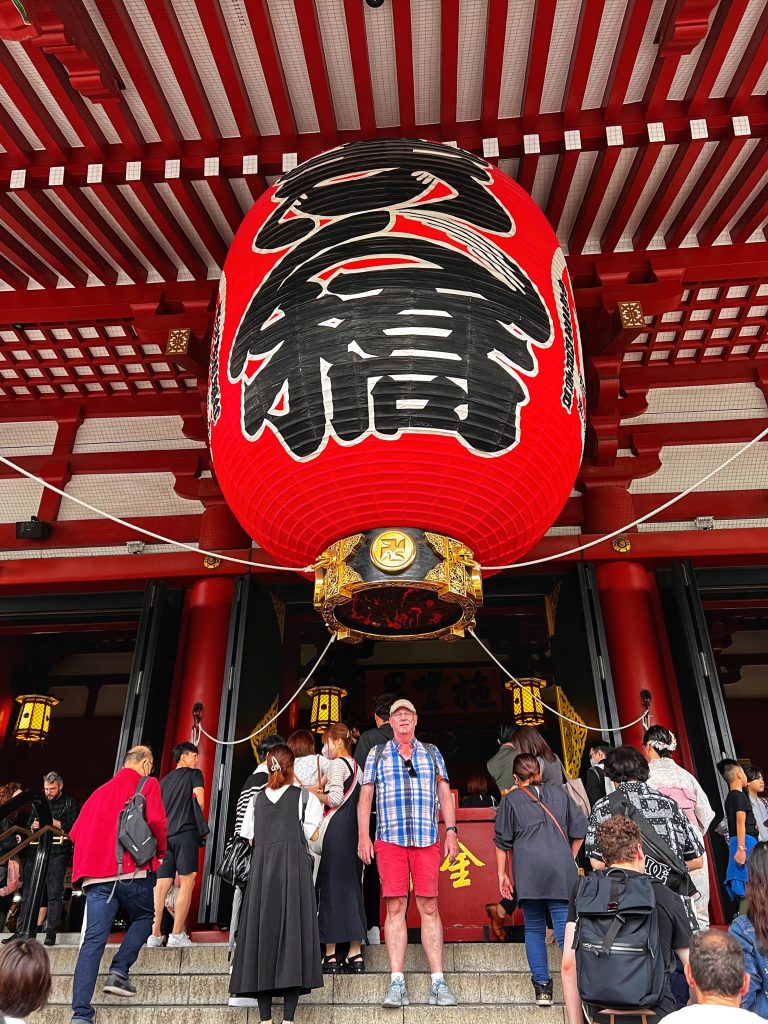
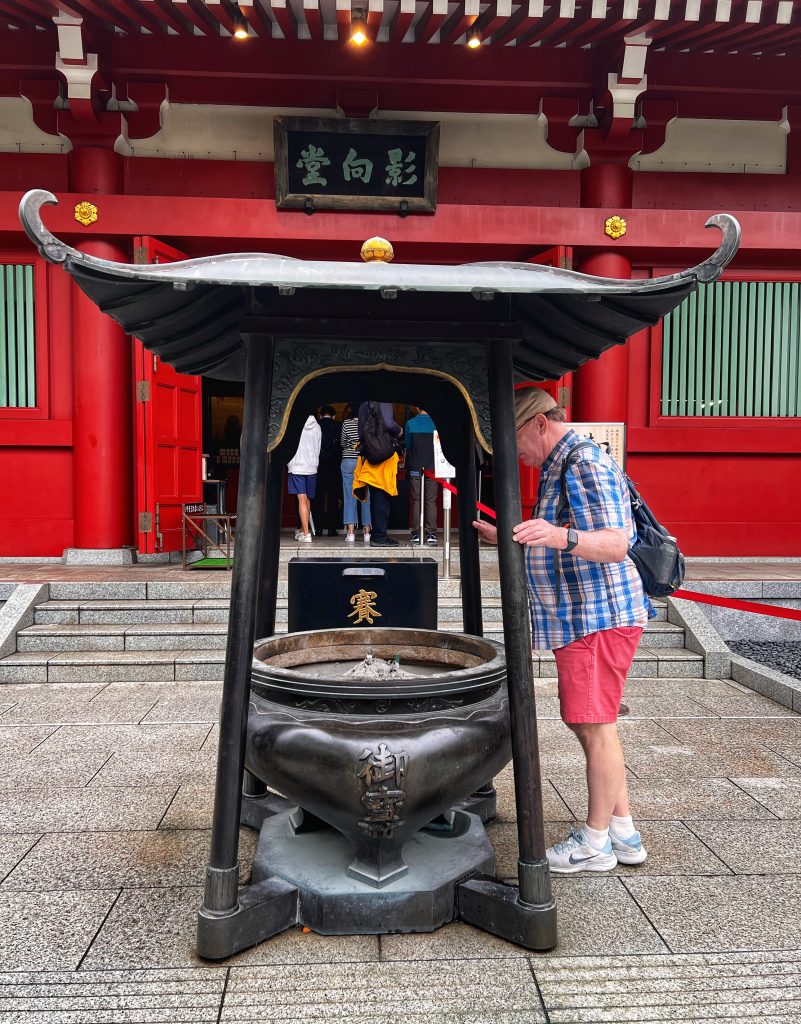
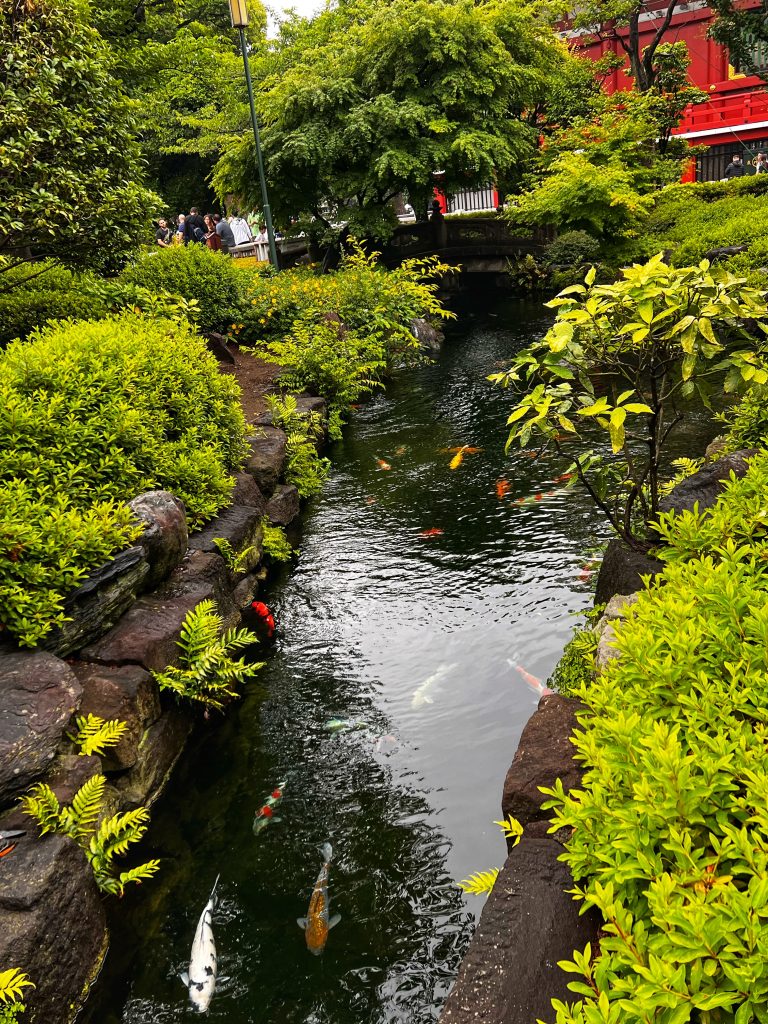
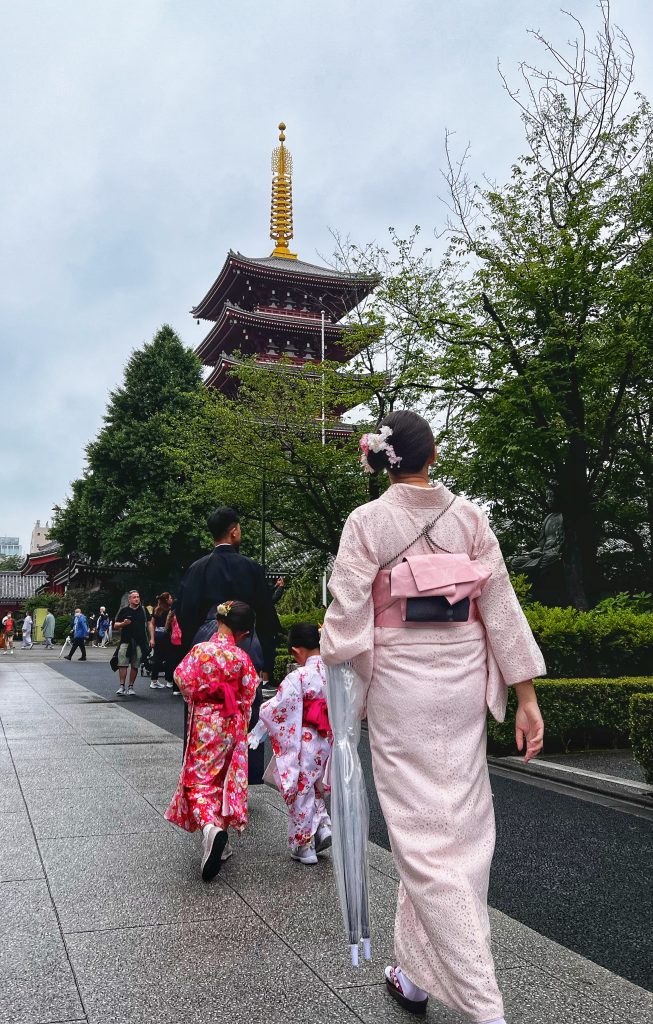
以前在国内去寺庙的时候,经常看到很多人虔诚的祈祷,大多数是乞求好运发财之类的,先不说那是不是佛教的宗旨。想象年轻时候的我,一定会选择在这里抽签,上香,祈祷;现在的我对这些完全没有兴趣,因为在某个时刻,我突然意识到了很多以前完全没有打开的格局,这个突然意识不是很多人口中的年龄和阅历,那是什么呢?简单粗俗的说,就是一个井底之蛙跳出井口的大开眼界。当一个人在一个完全无法控制自己命运,无能为力的地方,他/她能做的就只能是上香祈祷,问“天”为什么,问“天”赐好运。就像那只井底之蛙,井里的领头蛙不提供良好的环境,还不允许井里的蛙蛙anything们出井看井外世界,那只蛙就只能祈祷上天不要下雨了。
When I would go to temples in China, I often saw many people devoutly praying. Most of them were hoping for good luck and wealth. I’m not sure whether that is the real purpose of Buddhism. But I imagine that when I was young, I would definitely choose to “draw lots”, offer incense, and pray here; now I am not interested in these at all, because at a certain moment, I realized a lot of patterns that I hadn’t really seen before, and this awareness is not from age or experience. Then what is from? To put it simply and vulgarly, it’s just like a frog that finally jumps out of the well where it was stuck. When a person is helpless in a place, no way to change anything, then all they can do is pray, asking “God” why, asking “God” for good luck.
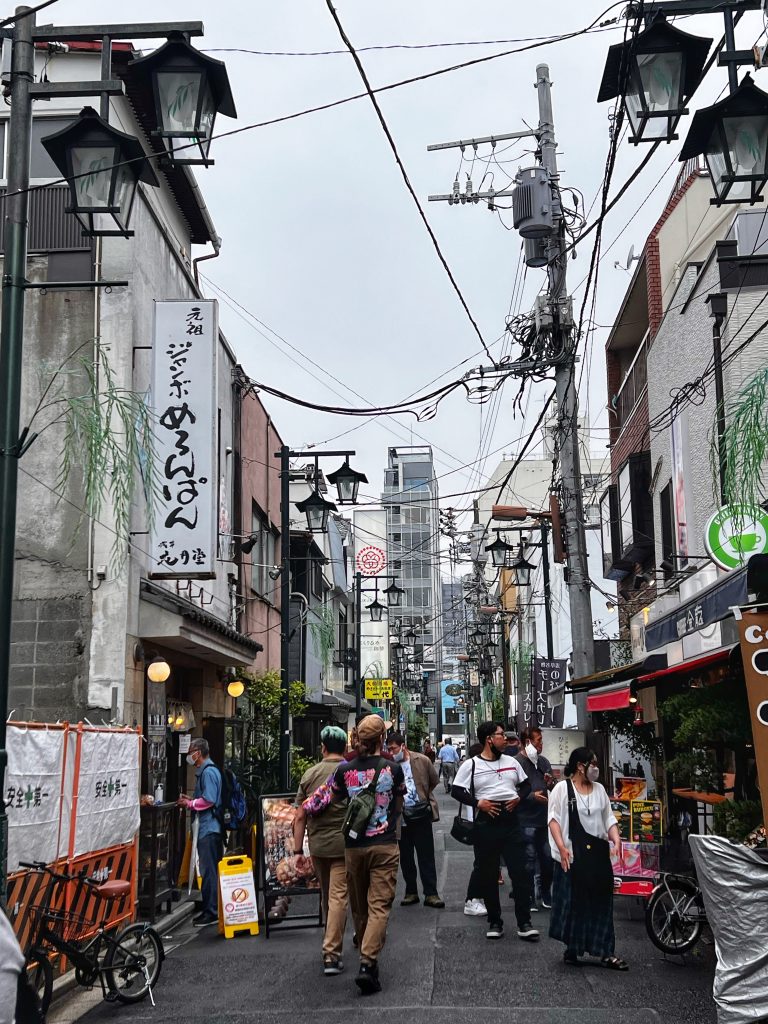
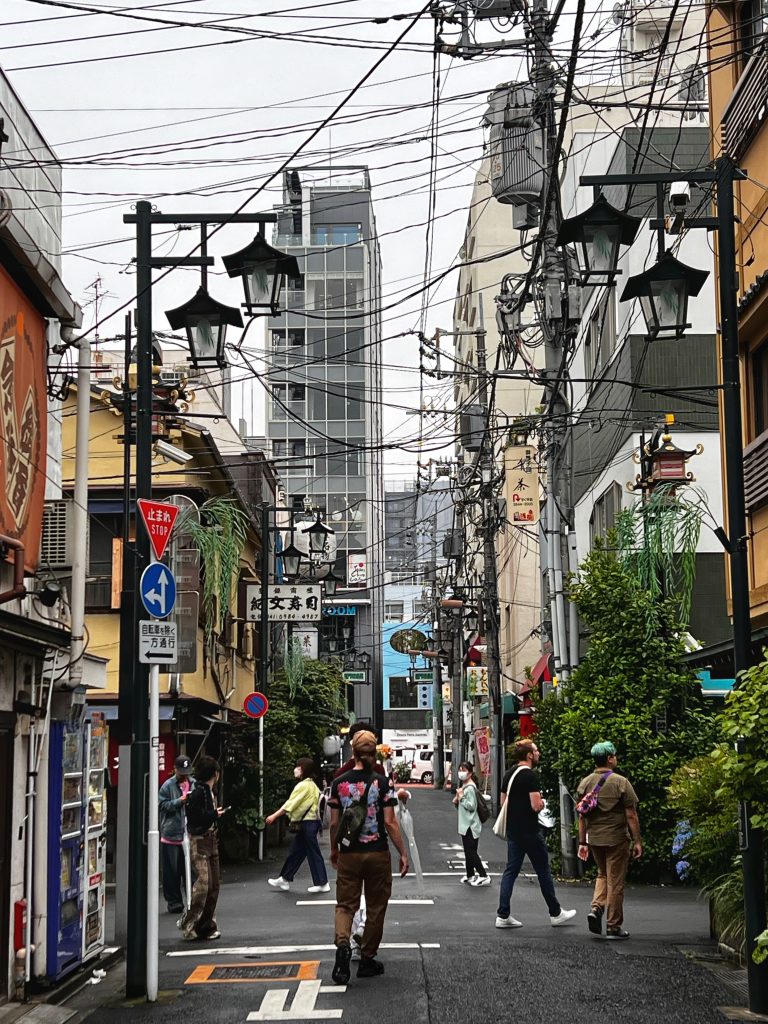
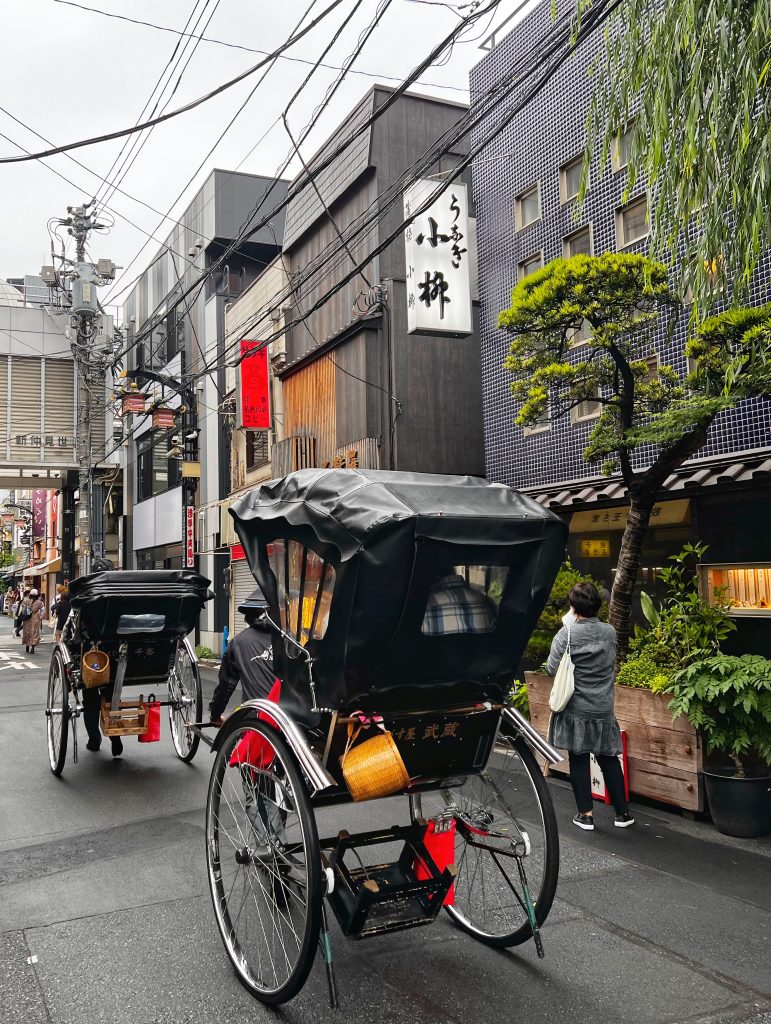
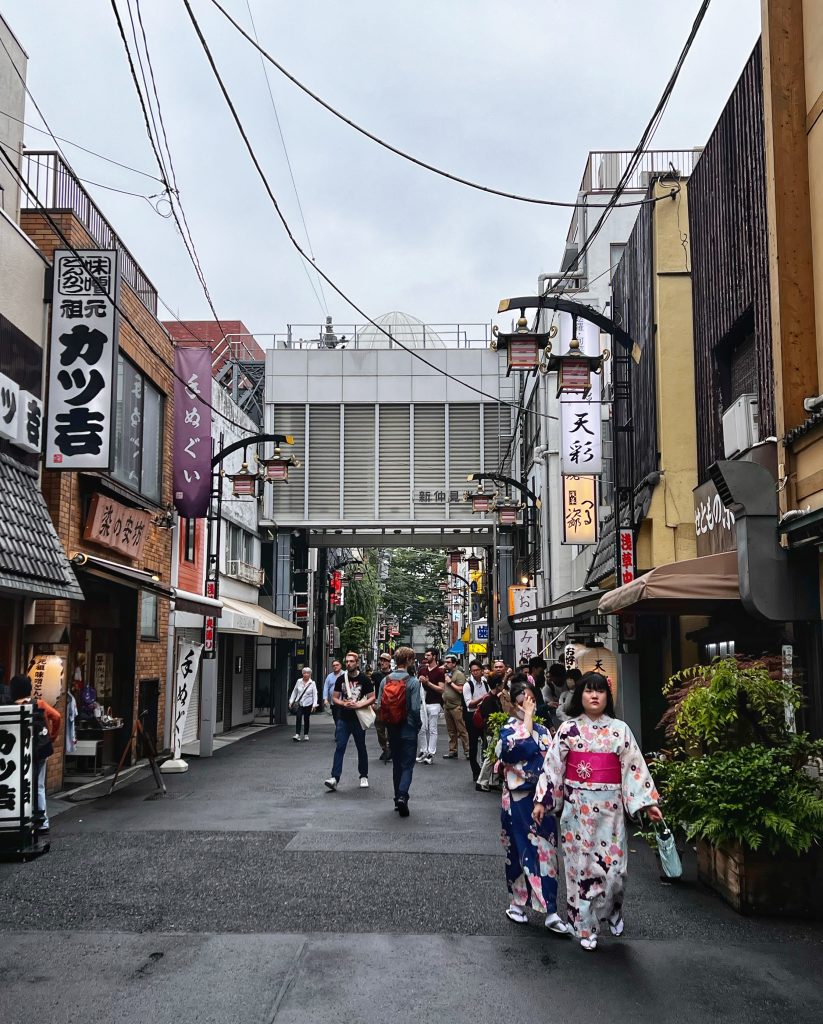
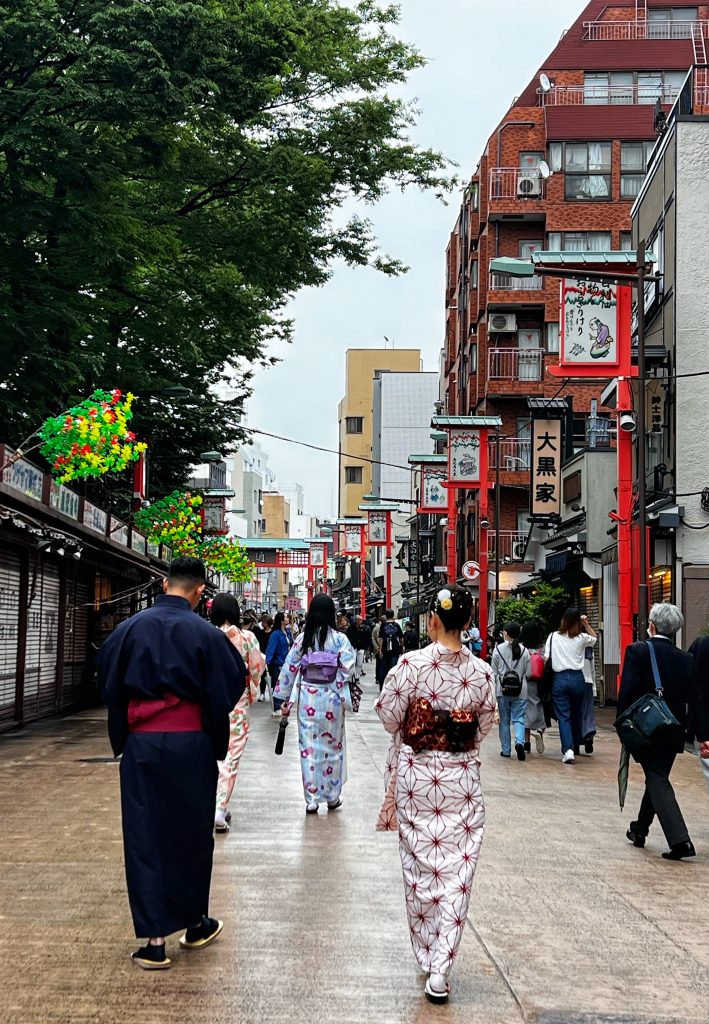
在浅草寺附近寻了一会儿,找到了一家面馆,是我想尝试的那种蘸面。味道好不错,面很劲道,汤很浓郁。
After searching for a while near Sensoji Temple, we found a noodle restaurant, which was a dipping noodle place that I wanted to try. Ours were both very good, with firm noodles and a rich thick dipping sauce.


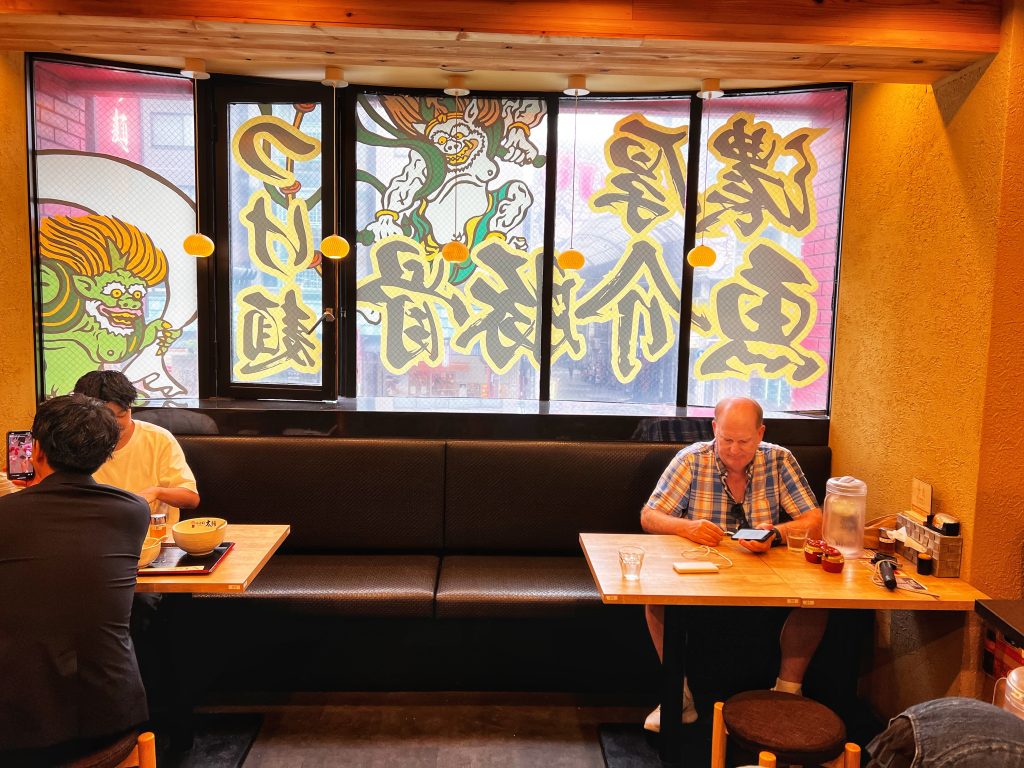
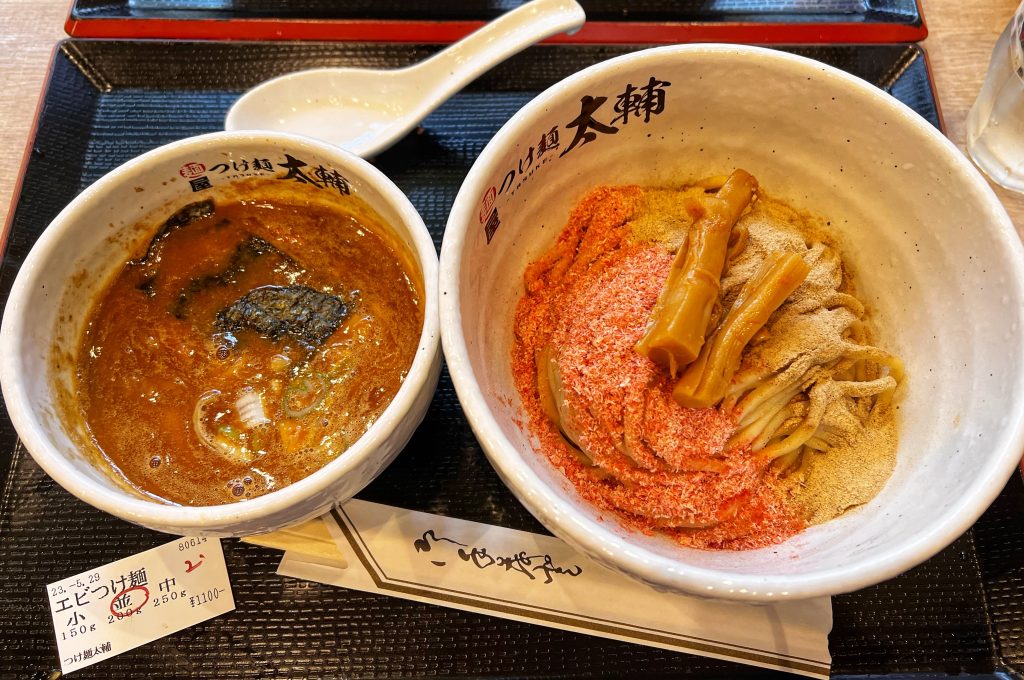
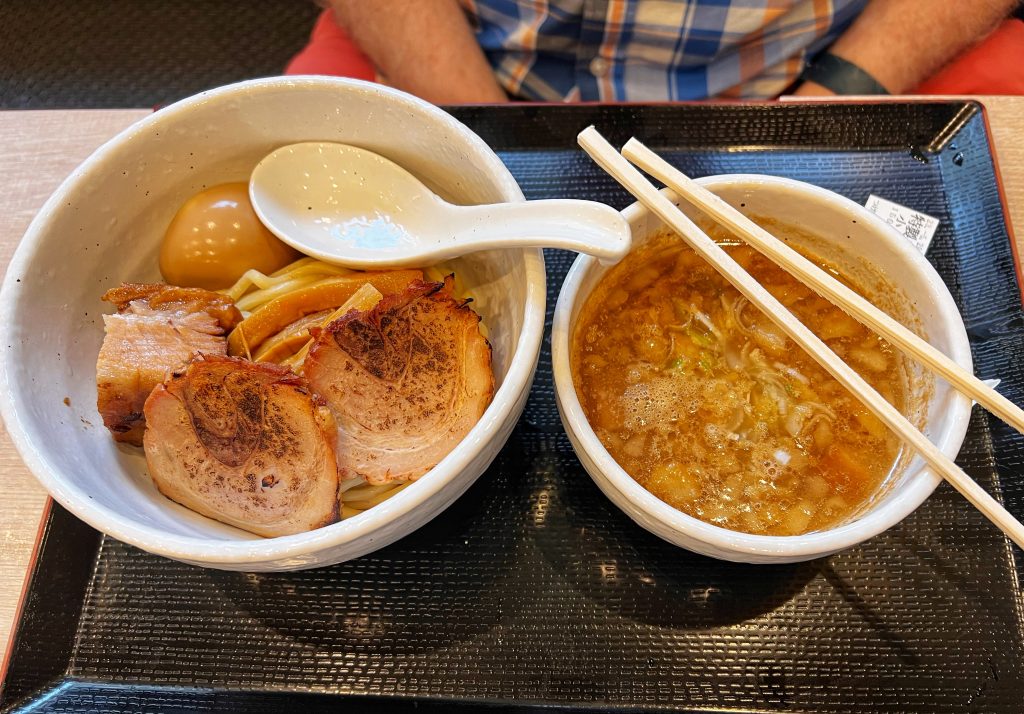
吃完午饭,出了面馆,发现又下起了雨,幸好计划的第二站是东京艺术水族馆。坐一班地铁,大概二十多分钟就到了水族馆,坐落在一座商城里。这是一个很不同的水族馆,里面只有金鱼,建立的背景源于日本艺术家堀江启一(Hidetomo Kimura)的创意和概念。堀江启一是一位将传统的金鱼养殖与艺术相结合的艺术家。他将传统的金鱼观赏提升到了一个全新的层次,通过灯光、音乐和装置艺术创造了令人独特的,令人惊叹的艺术展览。
After lunch, we left the noodle shop and found that it was raining again. Fortunately, the second stop we planned was the Tokyo Art Aquarium. It took about 20 minutes to get to the aquarium by subway, which is located in a large shopping mall. This is a very unique aquarium with only goldfish in it, and the displays are based on the ideas and concepts of Japanese artist Hidetomo Kimura who combines traditional goldfish farming with art. He has taken traditional goldfish viewing to a whole new level, creating unique and stunning art exhibitions through light, music and art.
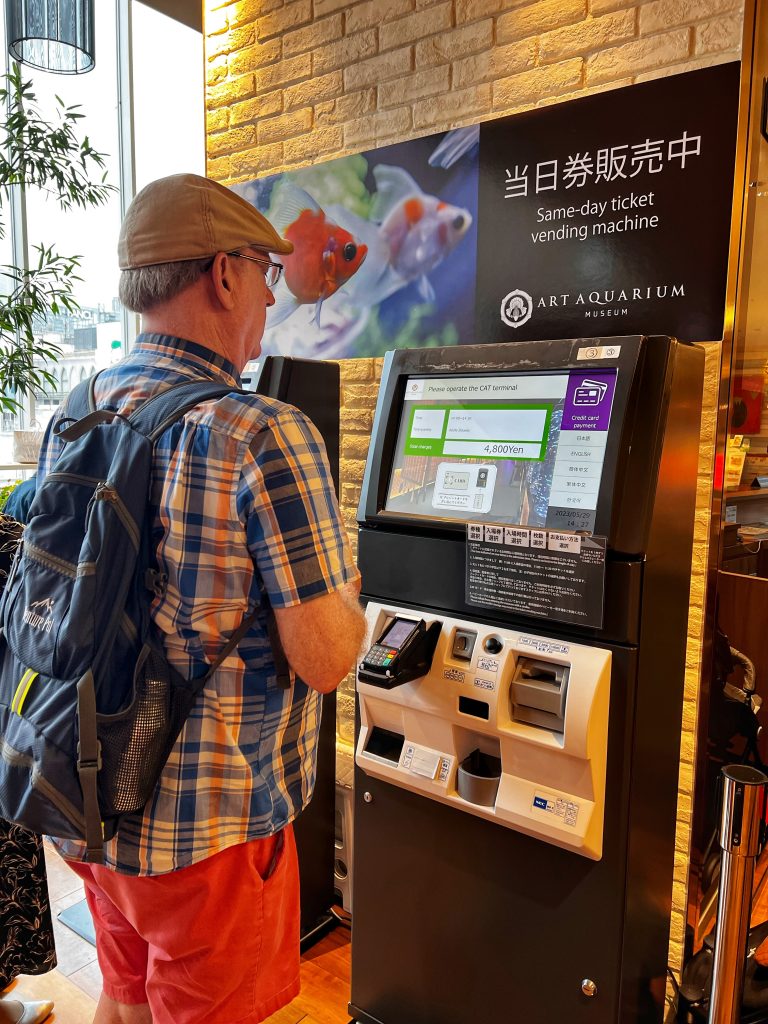
一般认为金鱼是在15世纪中期的室町时代从中国引入日本的,但大部分时间它们都是贵族的异国宠物。在江户时代,金鱼的受欢迎程度急剧上升,并且从那时起一直深受日本人的喜爱。水族馆里每个水族箱都展示着不同种类的金鱼,它们在水中自由自在地游动,流动的鳞片,每一条鱼都是如此精致而美丽。水的流动、音乐的律动,灯光的变幻,欣赏一下这里提供的宁静,放松和沉浸的感觉吧。
Goldfish are generally thought to have been introduced to Japan from China during the Muromachi period in the mid-15th century, but most of that time they were exotic pets of nobles. Goldfish’s popularity skyrocketed during the Edo period, and it has remained beloved by the Japanese ever since. Each tank in the aquarium displays a different type of goldfish, they swim freely in the water, with flowing scales, each fish is so delicate and beautiful. The movement of the water, the rhythm of the music, the changing of the lights, helps you enjoy the feeling of tranquility, relaxation and immersion provided here.
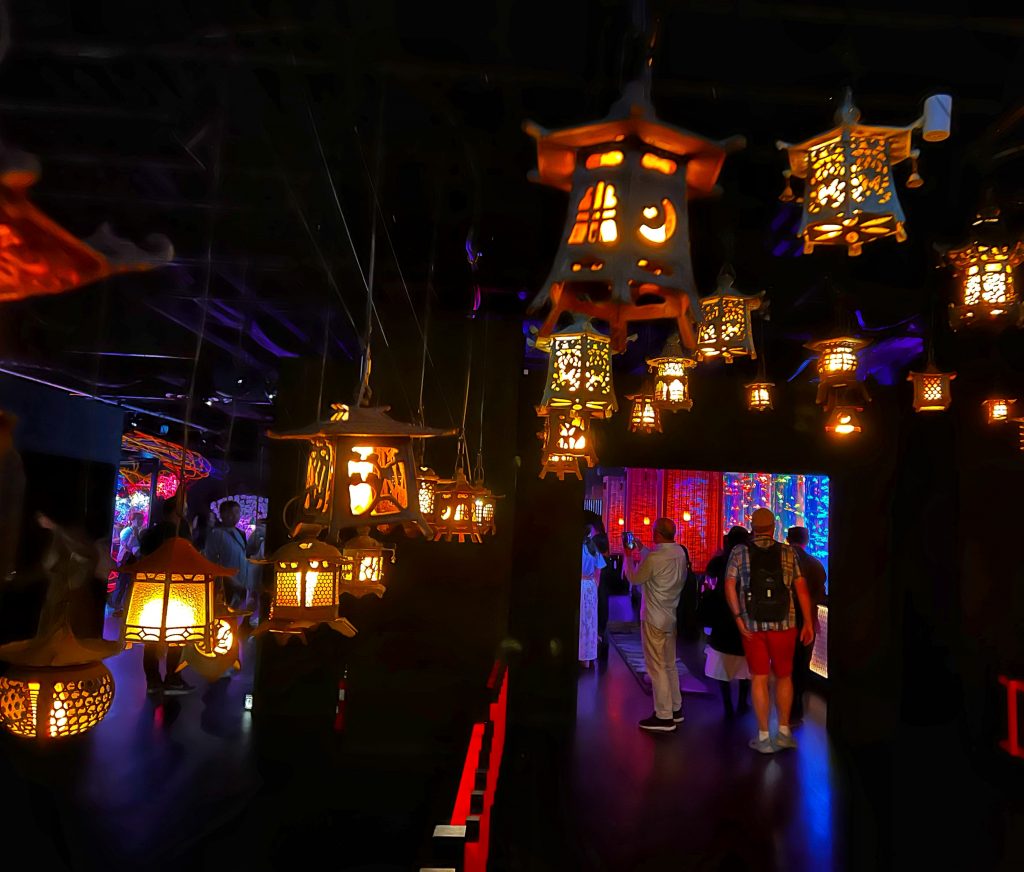

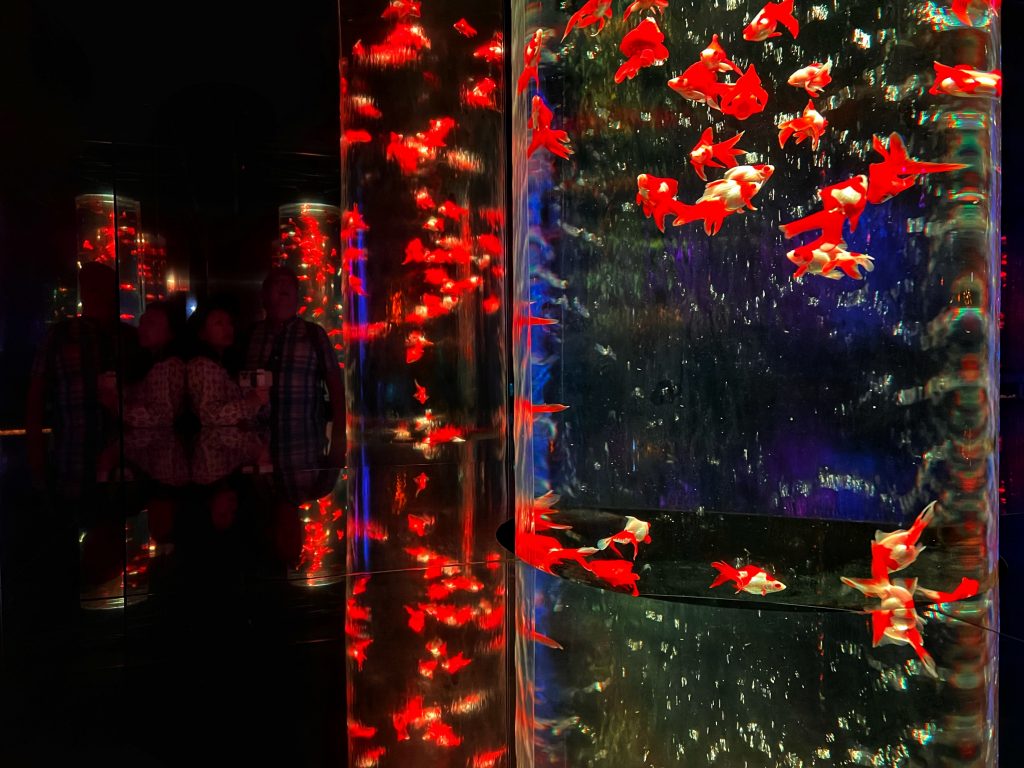
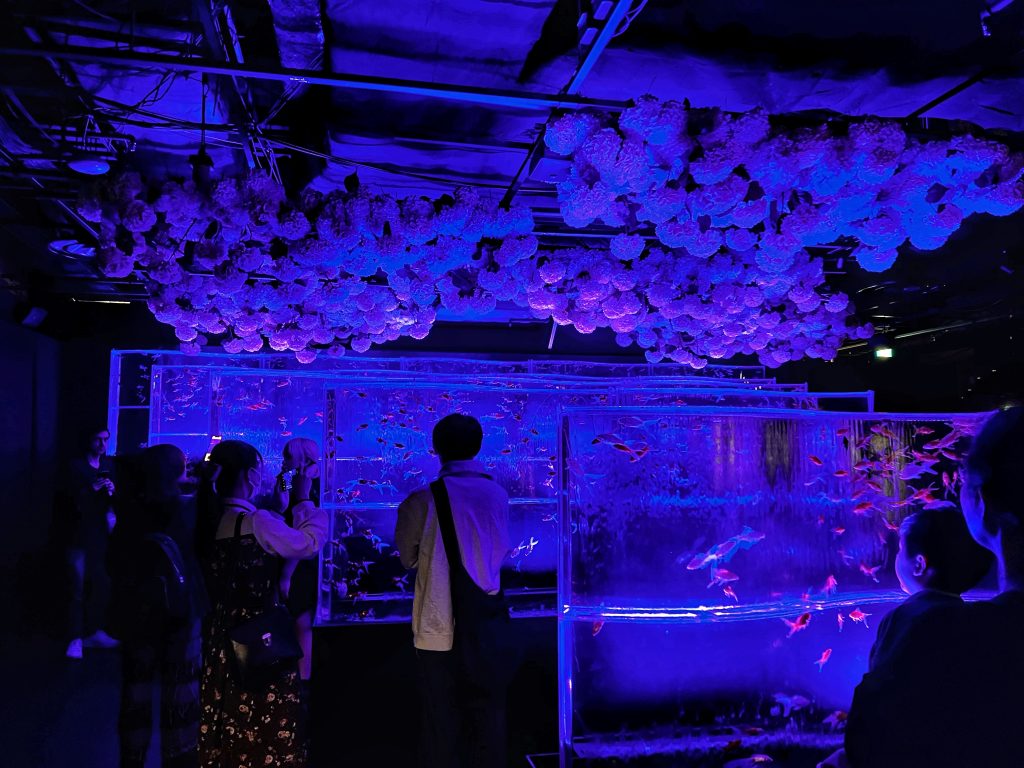
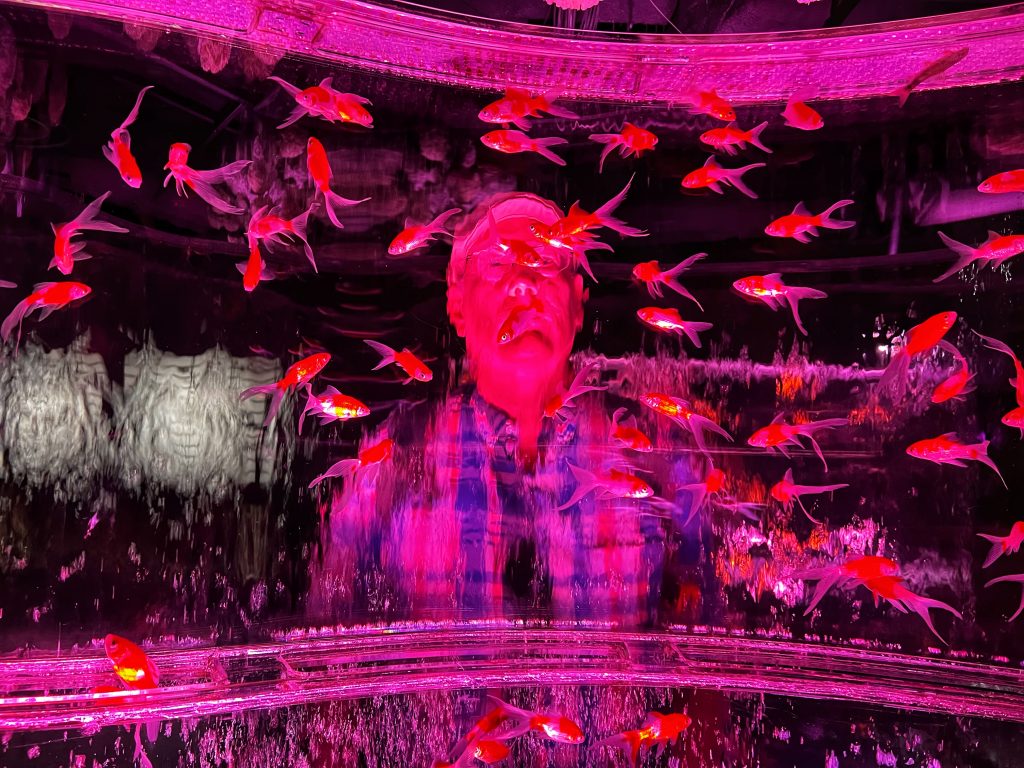
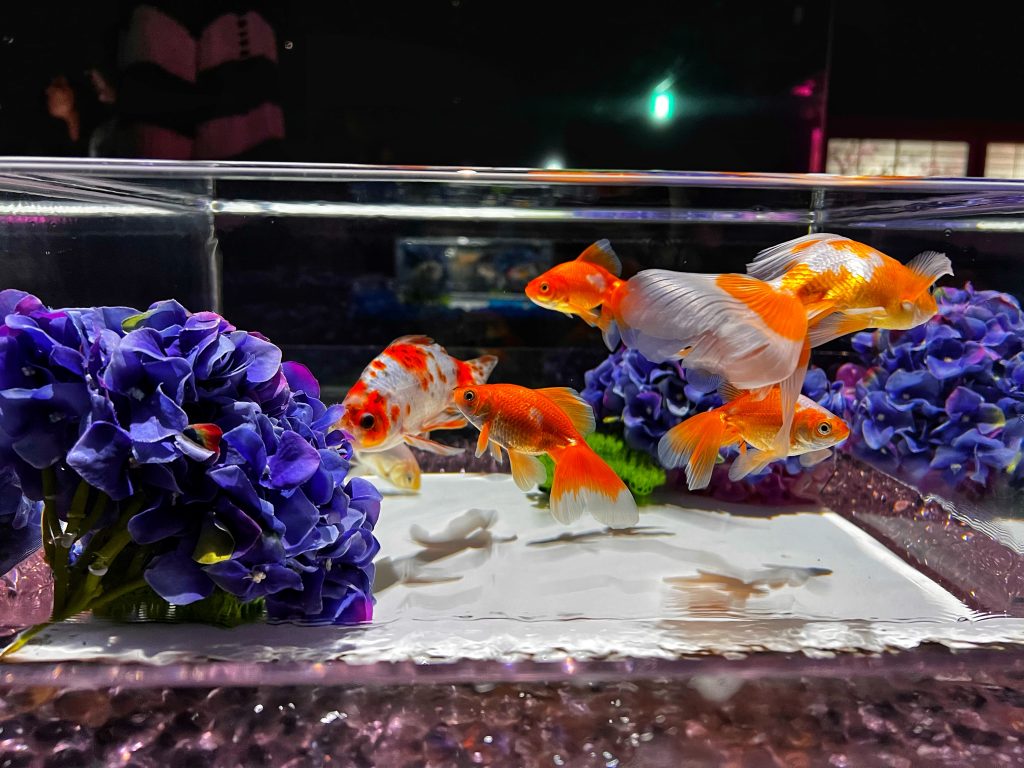

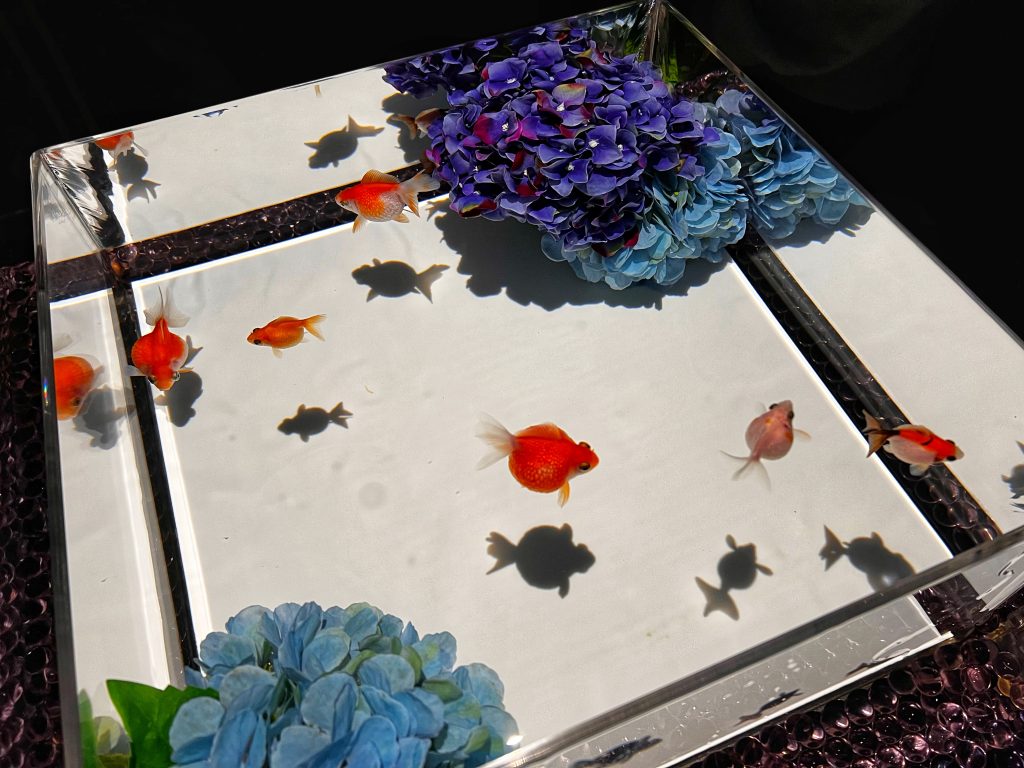
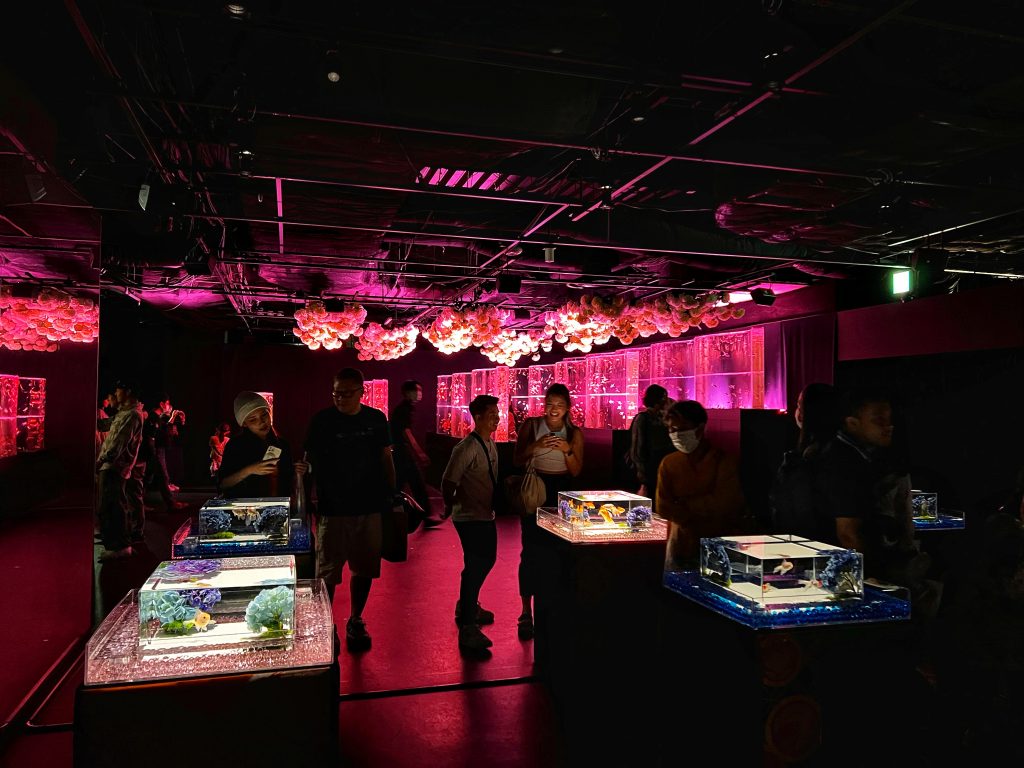
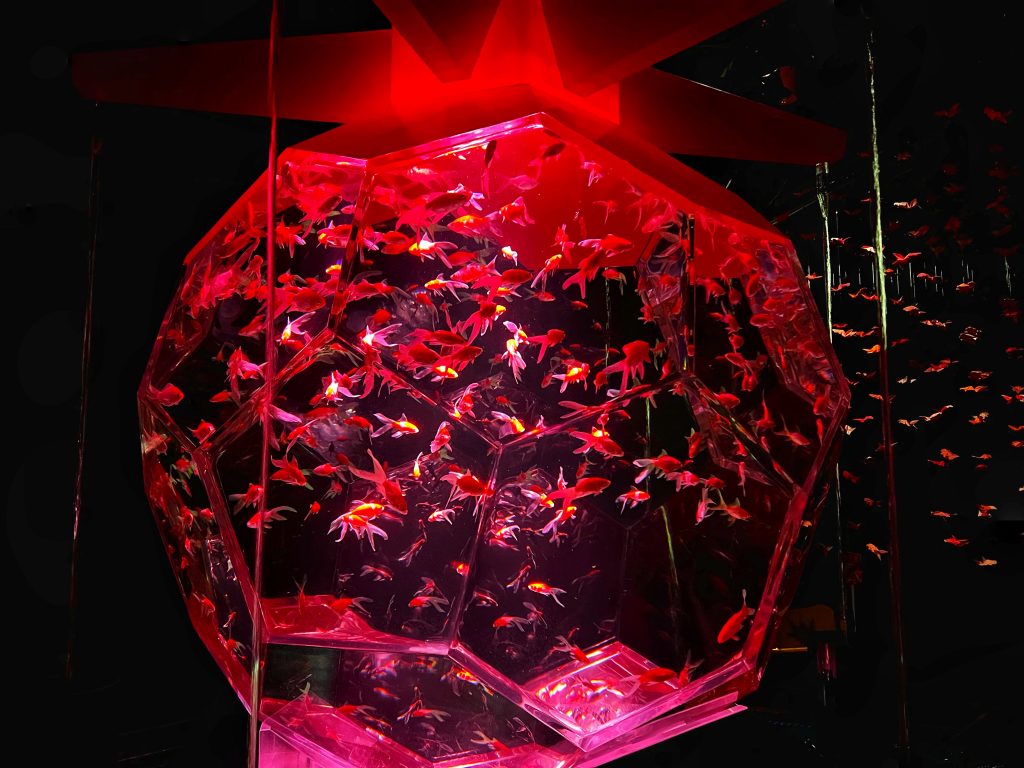
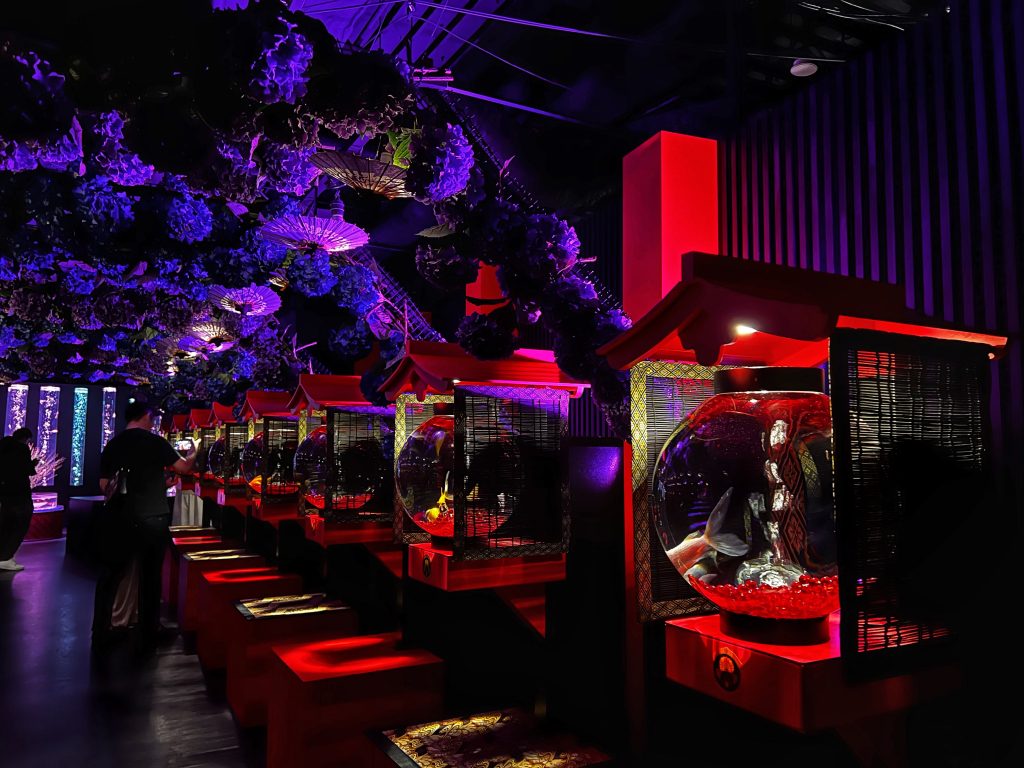
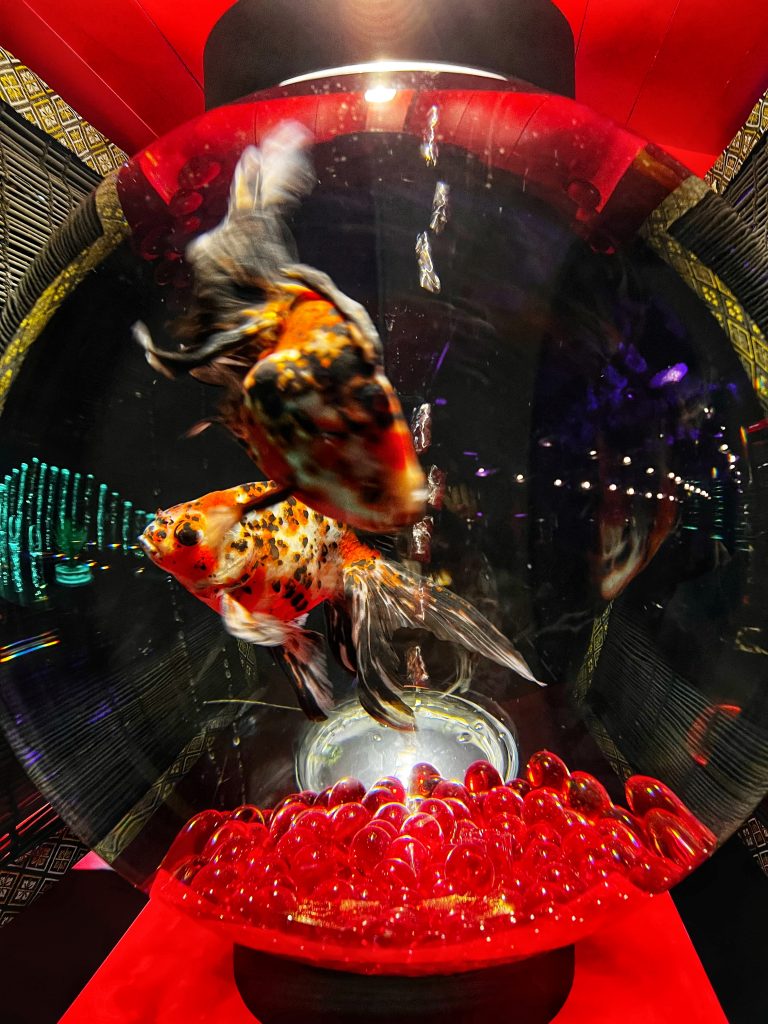
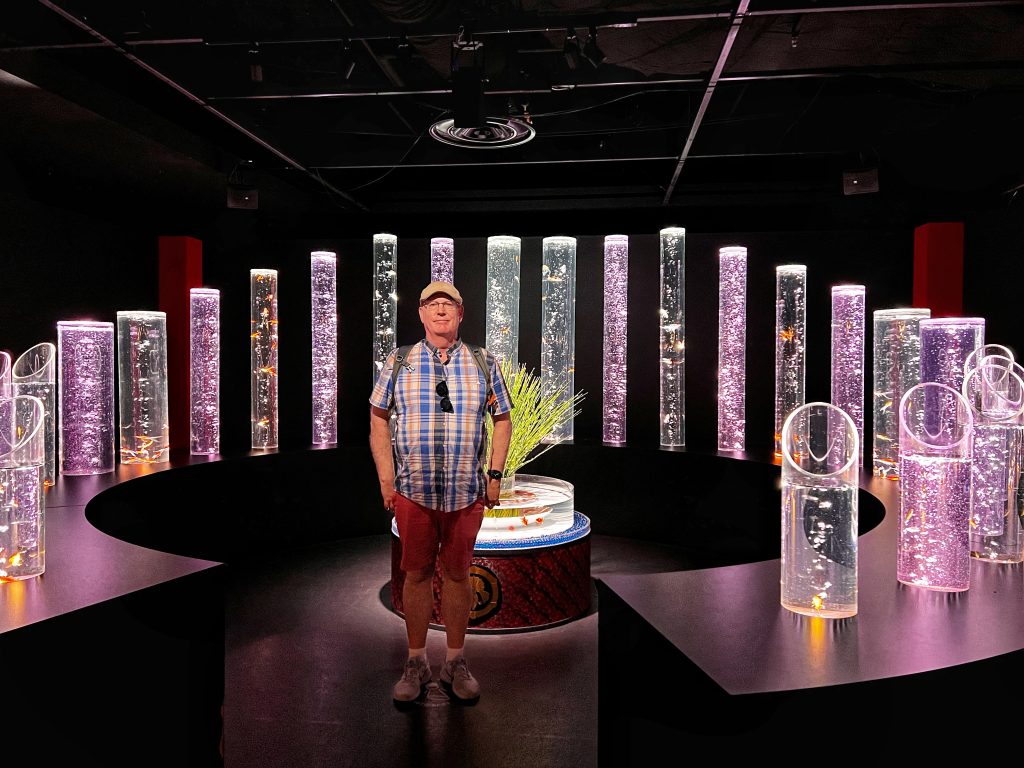
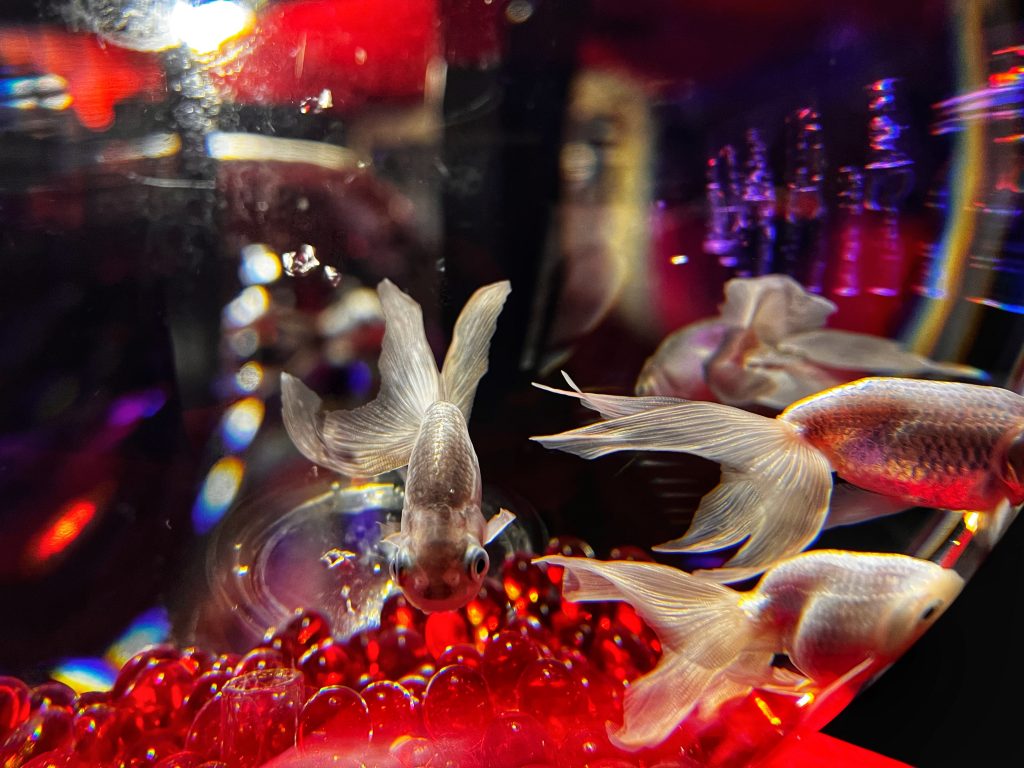
观赏完金鱼,坐地铁回酒店休息一下,下午4点左右的地铁已经开始比较拥挤了,东京人应该很不喜欢这么多游客跟他们挤地铁吧。本来找好了一个晚饭的饭店,结果我俩6点多去的时候,已经是满员了,8点多才能有空位,只好变成了四处寻找下一个饭店,最后我俩竟然又去了第一天晚饭去的地方,还好他家的饭还比较好吃。
After viewing the goldfish exhibit, it was still raining so we took the subway back to our hotel for a rest. At 4pm, the subway was already very crowded. Tokyoites probably don’t like so many tourists crowding the subway with them.
I had already identified a restaurant for dinner, but when we got there at 6pm, it was already full! They said we could be seated after 8:00, so we had to look around for another place. In the end, we ended up at the same one from the other night. Fortunately, the food there was quite delicious.
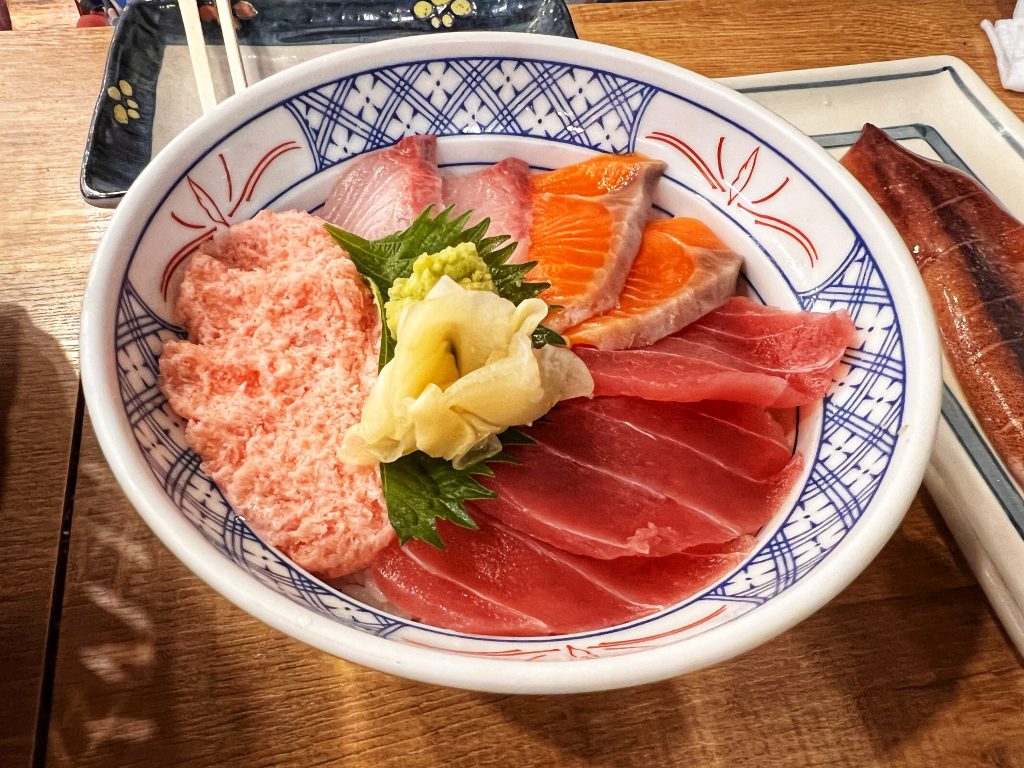
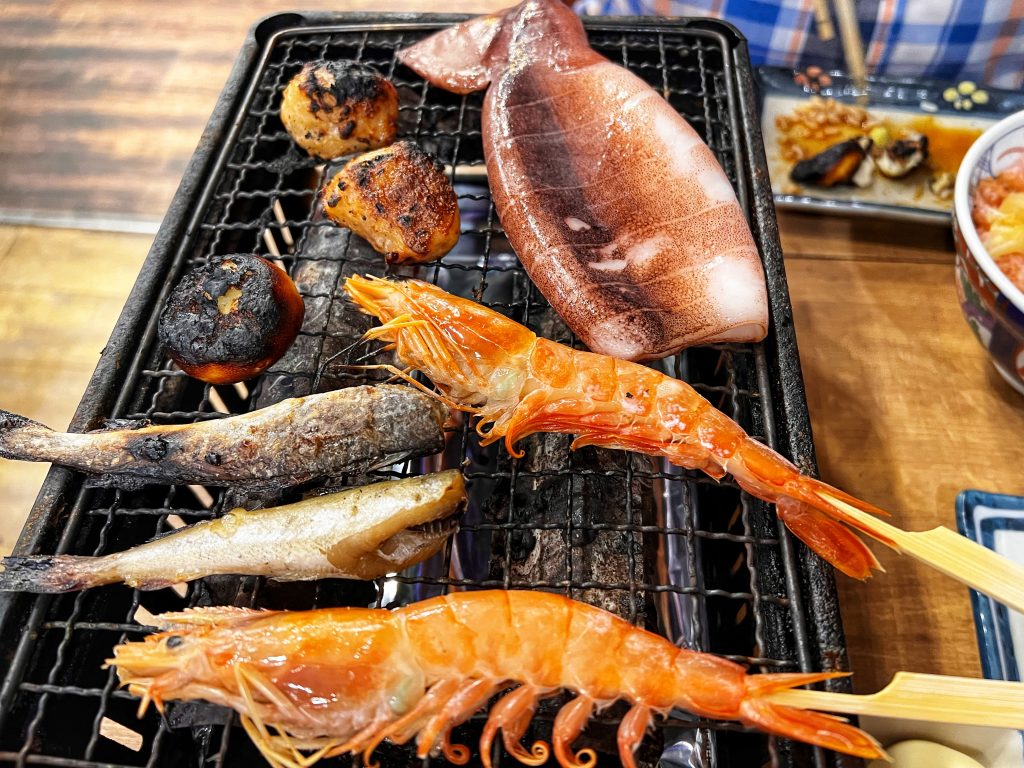
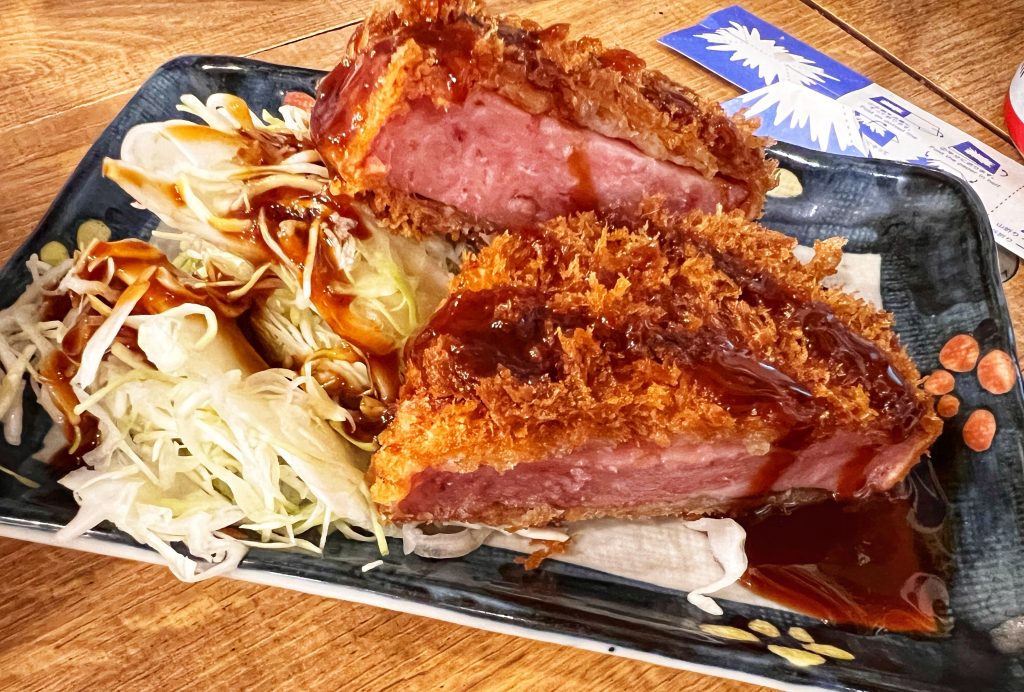
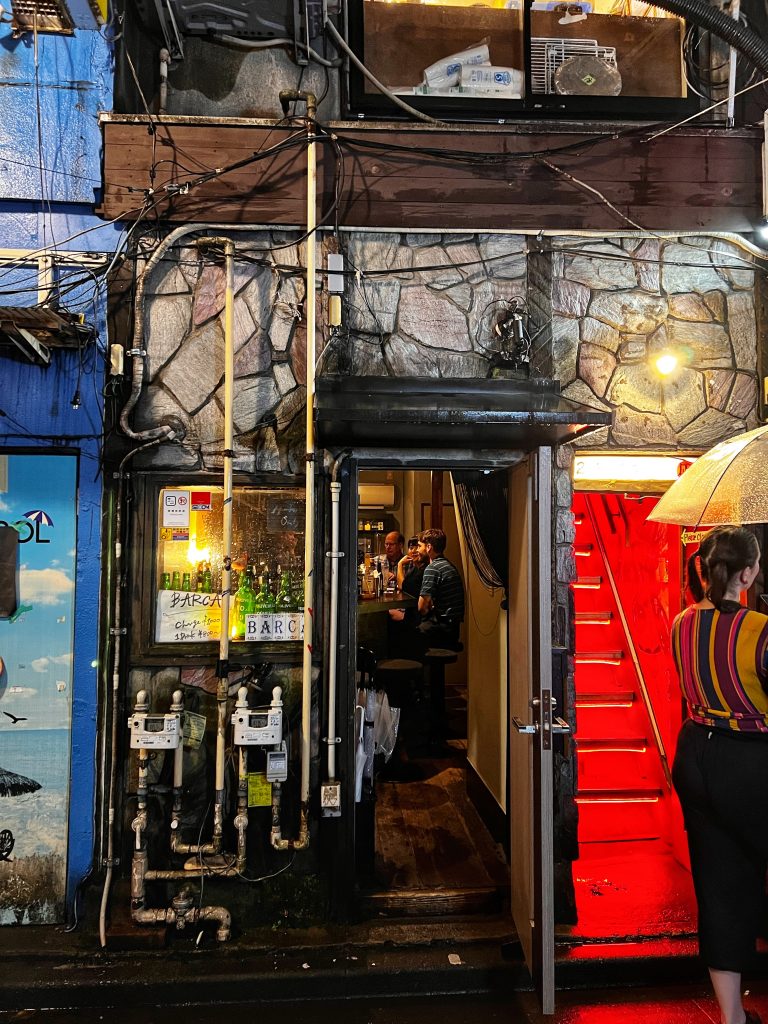
今天走累了,睡觉,晚安东京。
We are tired from walking today, time to sleep, good night Tokyo.


I remember going to the Sensoji temple with Mum and Dad. We saw many temples in Japan. I mostly liked the sand gardens. It’s very nice to see people wearing colorful kimonos, it gives you a sense of what makes Japan truly unique.
The Goldfish Aquarium looks very interesting and I like your movies in there.
Wondering what made the bar boring, no music?
Well the bar was boring because we were the only two there besides a young english bloke who was sitting with a barmaid telling boring stories … we felt trapped in the tiny place but we payed a cover charge to go in (typical) so we felt obligated to stay…
I felt very stressed in the bar..lol
今天的浅草寺和金鱼馆都很有特色,好看。
旅游游客很多。穿和服看着挺美的。
我也跟着开了眼界。
还有今天的美食也很馋人。
可惜你看不到金鱼的视频,等我发给你吧